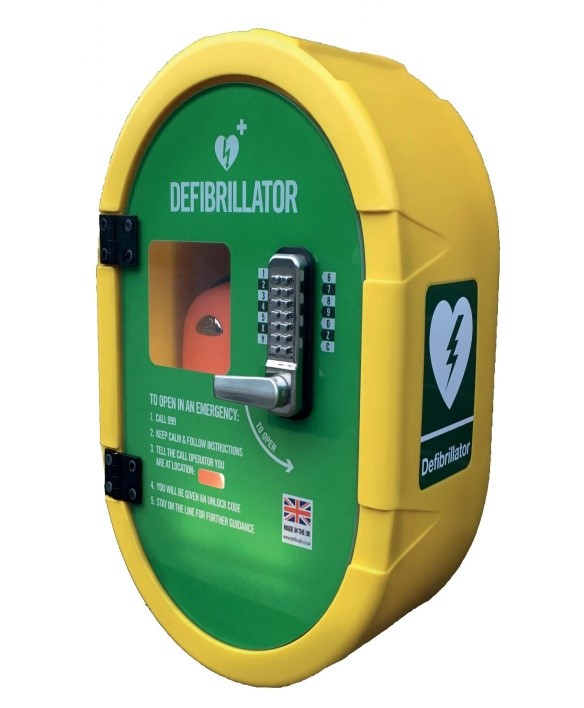 The Parish Council maintains two Automatic External Defibrillators (AEDs).
The Parish Council maintains two Automatic External Defibrillators (AEDs).
- On the wall of the Co-op in Westbourne (PO10 8UE)
- On the wall adjacent to Westbourne Village Stores (PO10 8SX)
The defibrillators are registered with The Circuit and can be found on www.defibfinder.uk which lists all registered and available defibrillators.
- There is also one on the wall of the Woodmancote Pub (PO10 8RD) which is maintained by the pub.
Many people are aware of these life-saving devices but are unsure how to use them. An AED is used to attempt to correct an abnormal hearth rhythm, which can arise from arterial blockages in the vessels that supply the heart with oxygen, valve failures, violent exercise shock or infections.
The heart supplies blood to all the organs, muscle and the brain. If the heart is not functioning correctly, brain damage/death can occur in as little as five minutes; therefore a victim can only be saved by immediate action of those nearest.
The AED is used for addressing ventricular fibrillation (chaotic heartbeat), ventricular tachycardia (fast heartbeat) and bradycardia (slow heartbeat). What it will not do is restart the heart when it has stopped beating completely.
Accessing a defibrillator in an emergency
If you suspect a major heart problem in a patient, you should always dial 999 immediately and ask for 'ambulance'. In Westbourne, this will normally get you through to the South East Coast Ambulance Service (SECAmb), who will ask you a set order of diagnostic questions about the patient to help them decide the best treatment in the quickest possible way. If an AED is recommended, they should advise you of the location of the nearest working AED and importantly the access code to open the cabinet. At the same time, SECAmb will dispatch an ambulance and probably a separate paramedic. Note that the most urgent action is often to start CPR so you will need several people - someone to do the CPR, and one or more to fetch the AED - so recruit friends, family, neighbours or passers-by as necessary.
Find out more about the Save a Life app.
If you have multiple people involved and/or things get confused, you can always call 999 for the ambulance again once you are at the AED cabinet to get the access code (note: you will need a mobile phone) but in that case you will be asked a series of diagnostic questions again, which will lose valuable time. In this case SECAmb will also need to be told the postcode where the AED is located before they can work out the access code - this postcode should be written on the cabinet.
How to perform CPR
CPR is preformed on an adult by crossing the palms of both hands and vigorously compressing the area of the sternum (central part of the chest) 15 times, then with head back and nose pinched, blowing into the patient's mouth twice before restarting compressions, the latter being the most important aspect. More information is available from the NHS.
Using the defibrillator
Once you have the cabinet code, open the cabinet and take the AED and any accompanying equipment or papers to the patient. The AED is specifically designed to be used by untrained people, and has clear instructions in its use, and will talk to you at each state. Be aware that the AED will measure the patients heart activity, and if it cannot treat the heart it will not show the patient - instead it will say something like "no shock advised" and tell you to continue CPR.
Defibrillator maintenance
Westbourne Parish Council is responsible for the maintenance of the defibrillators on the wall of the Co-op and Village Stores. If you have had to use the defibrillator, please contact us as soon as possible so that we can replace the parts so it is ready for use again.
More information about about Public Access Defibrillators is available from the Ambulance Service.